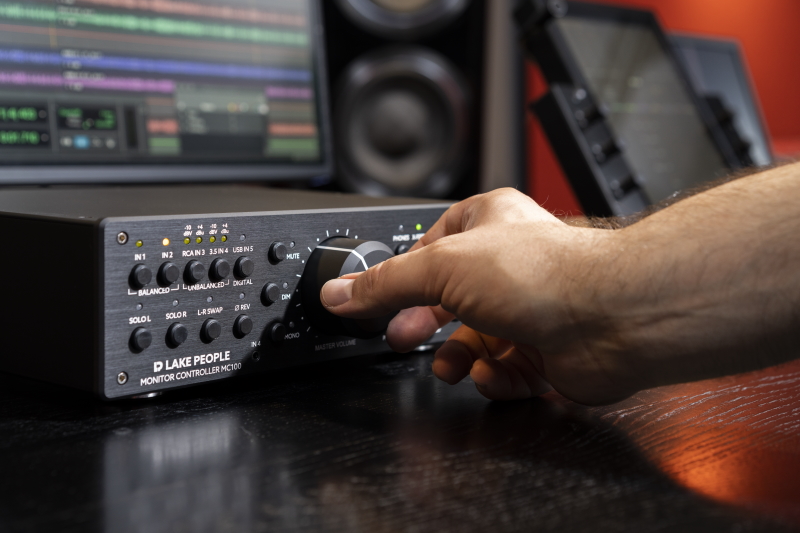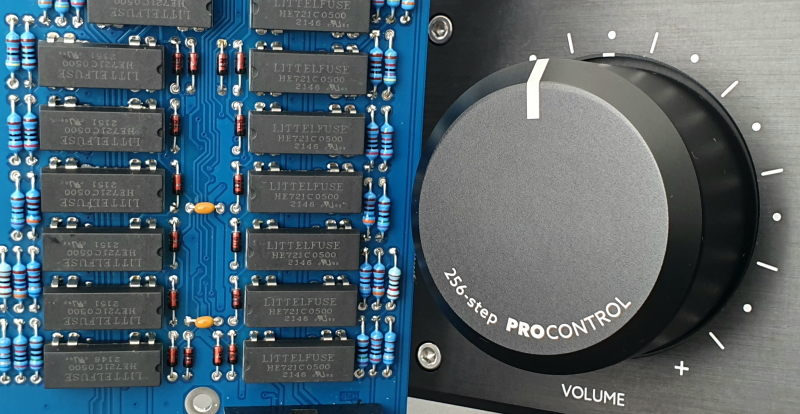Lake People and Violectric offer relay-based volume control

Most volume controls in high-quality audio electronics are realized as potentiometers. A lot of other ways to change an audio signal’s level have clear disadvantages compared to classic potentiometers. One option is clearly superior, though: the relay circuit.
The developers behind the brands Lake People and Violectric use relay circuits for the volume control in their top models. Those circuits are comparably complex and expensive, but deliver a level of quality other technologies cannot achieve. A 256-step resistor network comprised of fixed resistors with low tolerances guarantees absolute precision. In other words: there is no better alternative to control volume than through reed relays.
Electrical engineering has a whole host of possibilities to realize volume control. A step switch delivers outstanding sound performance, but has only a very limited number of steps, is complicated to build and cannot be automated. Electronic switches are easy to automate and are very cheap, but do not fulfil the sonic requirements. A VCA (Voltage Controlled Attenuator) produces distortion and has problems with channel synchronicity; integrated circuits create considerable distortion and noise. A DCA (Digitally Controlled Attenuator) can yield decent results, but cannot quite satisfy high-end demands. However, DCAs are often used.
The most widely used alternative at least for analogue applications is the potentiometer. The sliding resistors are scalable in their sophistication, so they can be perfectly integrated into specific circuits – there are potentiometers for price-conscious applications and others for more demanding use cases like the Alps RK27. But potentiometers have weaknesses: they are mechanical components and hence subject to wear and tear. Particularly the special grease that is meant to facilitate frictionless operation can deteriorate over time, resulting in scratchy noise. Potentiometers also require buffer amplifiers for undisturbed operation, which means additional electronic expense. As useful as the potentiometer may be, it is not ideal.

The RCA (Relay Controlled Attenuator) solves many of the problems mentioned. The relays switch between resistor combinations, similar to the step switch, but with more steps and automatable. The relays are operated via rotary encoders, buttons or potentiometers – Lake People uses the latter, as they display the current position of the controller. Lake People and Violectric employ reed relays, as they are encapsuled in a small glass tube with protective gas, making them particularly quiet and isolating them from environmental influences. With 256 steps at 0.4 dB per step, the accordingly equipped Lake People devices achieve a maximum of over 100 dB – more than enough for playback volume control. The low-tolerance fixed resistors allow for great precision, channel balance and thermal stability for discerning listeners.
Why RCA is the best way of controlling volume:
- no scratching, as there is no sliding resistor surface
- perfect channel balance
- ideal crosstalk resistance, as the channels are physically separated
- larger control range than with a potentiometer
- multichannel operation easy to realize
- long-lasting through hermetically sealing wear parts
- no additional distortion or noise, as there are only fixed resistors in the signal path
- perfect sound, as there is only one voltage divider in the signal path
- easy to automate through rotary encoders, buttons, or mechanical actuators
These advantages are offset only slightly by very low noise during volume changes and the high technical complexity and according price.
Reed relay volume control debuts with the monitor controller MC100 PRO for Lake People. At Violectric, however, the relay has already built a tradition: hifi central DHA V5902 PRO and headphone amplifier HPA V550 PRO offer the 256-steps relay circuit for the outputs. In the high-end field, Niimbus US 5 PRO uses reed relays for absolutely accurate level control and uncoloured sound.
 How to resolve AdBlock issue?
How to resolve AdBlock issue?